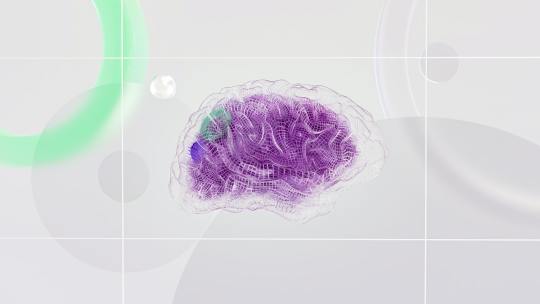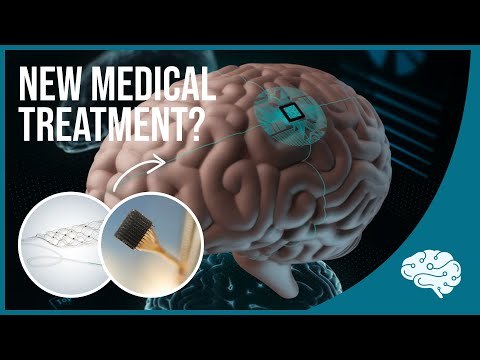#Stentrode
Explore tagged Tumblr posts
Text
Utilizarea Apple Vision Pro de către un pacient cu implant BCI Synchron
Synchron, o companie americană de tehnologie, a anunțat în premieră mondială utilizarea Apple Vision Pro de către un pacient care folosește un implant cu interfața creier-computer (BCI) Synchron. Mark, un bărbat de 64 de ani cu scleroză laterală amiotrofică (ALS), a reușit să controleze cursorul pe Apple Vision Pro cu gândul, pentru a juca Solitaire, a viziona Apple TV și a trimite mesaje…
#ai#ALS#Apple Vision Pro#augmentare umană#BCI#Comitet de Revizuire Instituțională#dizabilități#Elon Musk#implant creier-computer#independență#inteligenta artificiala#interacțiune digitală#interfață creier-computer#IRB#Mobilitate#Neuralink#paralizie#realitate augmentată#sănătate#scleroză laterală amiotrofică#Stentrode#studii clinice#Synchron#tehnologie
0 notes
Text
The thought of my writing furthering AI is horrifying! Writing and creating are core aspects of humanity, and we're just taking it and giving it to a machine to do something that should be done out of love?! What the heck?! Who decided this?! Who on earth thinks it's a good idea?! Use AI to detect cancer cells and stuff like the Stentrode, not art!
Quick PSA, if you get one of those "Work scanned, AI use detected" comments on AO3, just mark them as spam.
Some moron apparently built a bot to annoy or prank hundreds of authors.
There is no scanning process, your work doesn't actually resemble AI writing, it's all bullshit. Mark the comment as spam (on AO3, not the email notification you got about the comment!) and don't let it get to you.
#writing#ai#screw ai#humanity#GO CREATE#EVEN IF ITS BAD ITS ALREADY BETTER THAN AI#fanfic#ao3#writeblr
97K notes
·
View notes
Text

Apple is partnering with neurotech startup Synchron to integrate its implantable brain-computer interface (BCI), the Stentrode, into Apple devices. The Stentrode, implanted via the jugular vein and placed in a brain blood vessel, uses 16 electrodes to detect motor-related neural signals without requiring open-brain surgery.
These signals let users with severe motor impairments, such as ALS, control Apple products like the Vision Pro using thought, though at a slower pace than standard input. Since 2019, ten patients have received the implant under FDA oversight. Apple aims to support BCIs via its Switch Control accessibility framework and plans to launch a new BCI industry standard in 2025, echoing its 2014 move with “Made for iPhone” hearing aids.
Unlike Neuralink, which uses a more invasive method with over 1,000 electrodes implanted directly into brain tissue for higher-resolution control, Synchron’s approach prioritizes minimally invasive procedures for simpler use cases.
Harmful Effects Not Publicized
0 notes
Text
Breaking Into Brain-Computer Interface (BCI) Technology
Exploring Elon Musk's Competition

Are you fascinated by the remarkable advancements in brain-computer interface (BCI) technology and Elon Musk's venture, Neuralink?
BCIs is evolving rapidly, and it's essential to understand the landscape before diving into the intricacies of this cutting-edge field.
Elon Musk's Neuralink Milestone
Elon Musk recently made headlines by announcing the successful implantation of Neuralink's brain chip, aptly named "telepathy," into a human patient. This achievement marks a significant step towards Musk's vision of enabling individuals to control electronic devices using their thoughts.
Despite the buzz surrounding Neuralink's breakthrough, it's important to recognize that the field of BCIs has been active for over two decades, with several other players making notable strides in the development of similar technologies.
Meet the Competition
Let's take a closer look at some of the notable players in the BCI arena, each contributing distinct innovations and applications to this transformative field:
1. Blackrock
- Blackrock Neurotech, established in 2008, has been a key player in the BCI domain, pioneering the Utah Array, an implantable electrode smaller than a thumbnail. Their devices have empowered individuals with severe forms of paralysis to regain independence by controlling devices and accessing the internet using their thoughts.
2. BrainGate
- BrainGate, a consortium that originated from Brown University's research in the late 1990s, introduced the first implanted BCI for human use in 2004. Their devices, about the size of a baby aspirin, have enabled paralyzed individuals to communicate and even play video games through the power of their thoughts.
3. Synchron
- Synchron, based in Brooklyn, has developed a minimally invasive BCI called the stentrode, successfully implanted in several individuals globally. This innovative BCI sits inside the blood vessels of the head, transmitting brain signals wirelessly to control devices, presenting a unique approach to BCI technology.
4. Academic Institutions
- Numerous universities and research institutions worldwide are also at the forefront of BCI research, conducting one-off surgeries and trials to explore the potential of BCIs in enhancing the lives of individuals with paralysis and other neurological conditions.
What Neuralink Must Prove
While Neuralink's recent achievement is indeed remarkable, it's crucial to acknowledge that the company is at the initial stages of operationalizing its BCI technology. Successfully enabling individuals to control devices using their thoughts is just the beginning of a longer journey.
The competition in the BCI space is robust, with each player offering distinct technological innovations and addressing unique applications and user needs. As Neuralink and its counterparts continue to push the boundaries of BCI technology, it's imperative to closely monitor their progress and the impact of their innovations on individuals with neurological conditions.
Final Thoughts
The emergence of BCI technology presents a promising frontier in the intersection of neuroscience, medicine, and technology. As Musk and his contemporaries strive to harness the potential of BCIs, the future of these innovations holds the promise of significantly enhancing the quality of life for individuals with paralysis and other neurological challenges.
As the field of BCIs continues to evolve, it's an exciting time for tech enthusiasts and professionals to witness and contribute to the transformation of this groundbreaking technology.
So, are you ready to delve deeper into the world of brain-computer interface technology and witness the unfolding innovations that could reshape the future of human-computer interaction? The journey may be complex, but the potential rewards are undoubtedly worth the exploration.
#tutortacademy#machinelearning#datascience#algorithm#brain chip#elon musk#neuralink#elon twitter#neural implant
0 notes
Text
Un pequeño dispositivo envía señales desde el interior del cerebro de es...
youtube
Stentrode
dispositivo que detecta ondas cerebrales
Reportaje de CNN en Español
#ciencia #tecnología #Stentrode #CNN
https://youtube.com/watch?v=9FS8Wr_RmJ8&si=3F2moAOt2CpE2zQB
0 notes
Text
Notable Advances and Breakthroughs in Neuroscience Research

Neuroscience studies brain development, structure, functioning, and behavior. It combines research and resources from biology, psychology, computer science, and other disciplines. Recent advances in neuroscience hold significant promise for long-term contributions to a number of fields.
One neuroscience breakthrough is live 3D brain function mapping, a novel approach that accurately links brain functions to matching physical structures. Researchers used advanced high-resolution techniques like retinotopic mapping and 3-photon microscopy in live mouse brains to achieve this breakthrough.
Retinotopic mapping identifies and maps visual areas in the brain by correlating stimuli like patterns or colors with neural activity. By combining this approach with 3-photon microscopy, which provides high-resolution imaging of deep brain structures, researchers have accurately identified and localized (or determined the locations) of active brain regions in live subjects like mice. This breakthrough can be useful in studying brain changes associated with various diseases.
Interoception, identifying and interpreting internal bodily signals like hunger, is another advance in neuroscience. Interoception links thoughts and emotions to bodily states, and can influence decision-making processes. It also shapes an individual's sense of self. Hindrance of interoception can lead to conditions like depression. Studying interoception has supported the benefits of mindfulness meditation (which enhances interoceptive awareness) as а therapeutic approach for mental health disorders.
Scientists have also discovered spiral patterns of activity in the cerebral cortex, the brain's outermost layer. These spiral signals assist in organizing brain activity and cognitive processing. By facilitating rotational motion, they connect and synchronize various brain networks. This interplay helps the brain work more efficiently and process information better. Studying the relationship between these spirals and cognitive processes helps scientists understand brain function and how disorders like dementia affect them.
Stanford researchers achieved a breakthrough in neuroscience by creating a cost-effective technique called COSMOS (cortical observation by synchronous multifocal optical sampling). COSMOS allows for the visualization and comprehension of decision processing in the brain and uses a specialized bifocal microscope to record neural activity in the mouse's cerebral cortex. Unlike previous optical methods limited to capturing neural activity in a single camera frame across the curved cortex surface, the bifocal microscope overcomes this obstacle by facilitating simultaneous focus on two areas of the cortex.
Recently, researchers in Hong Kong discovered a new way to help repair damaged spinal cord tissues using stem cells. They took human neural stem cells and genetically modified them by reducing the amount of a certain gene called SOX9 that the body expresses after spinal injuries. The SOX9 gene provides DNA instructions that assist in developing various organs and tissues, including bones and cartilage. However, this gene often hinders stem cells from replacing damaged neurons and spinal cord circuits. Lowering its levels allows stem cells to grow new neurons and reconnect circuits in subjects with spinal injuries. This breakthrough has been effective in laboratory tests, with treated subjects such as rats regaining the ability to walk. It also holds great promise for developing treatment for those who have experienced spinal cord injuries.
Likewise, the University of Melbourne scientists developed a small brain implant called Stentrode for those with motor neuron disease, which causes paralysis in the upper limbs. Through wireless technology, the Stentrode chip transmits signals from brain activity to a computer device, which then interprets the signals and translates them into the action an individual intends. So far, Stentrode has shown a 93 percent accuracy rate in enabling subjects to perform simple tasks such as writing.
1 note
·
View note
Text
0 notes
Text
A Peek Inside Synchron’s Stentrode – The Best Innovation Of 2021
Synchron’s Stentrode is one of the best innovations of 2021, the first-of-its-kind brain implant. Read more about how it was developed here: A Peek Inside Synchron's Stentrode
Follow The Brainy Bits for more interesting content!
#stentrode#neuroscience#education#neuroscientist#neurotech#science#brain#technology#brain science#neurodivergence#epilepsy#mental illness#researchers#scientists#treatment#parkinsons#synchron#thomasoxley#brain computer interface#best-innovation
1 note
·
View note
Text
Neuralink Rival 'Stentrode' Brain Chip Lets Paralyzed Patients Control Computers with Their Minds!
Neuralink Rival ‘Stentrode’ Brain Chip Lets Paralyzed Patients Control Computers with Their Minds!
California Start-up Synchron recently published its study and findings in the success of the “Stentrode” Brain chips implanted on paralyzed and disabled patients to help them control and use computers with their minds. The new neural chip utilizes a revolutionary way to implant the device in the body’s bloodstream that corresponds directly to the human brain.

(Photo : University of Melbourne…
View On WordPress
0 notes
Note
how do you feel about elon musk’s “brain chip to cure autism and schizophrenia/mental illness” idea? any thoughts?
Reuters reports that Neuralink has killed roughly 1,500 animals since 2018. As result the company is currently under federal probe, which was opened in recent months by the U.S. Department of Agriculture’s Inspector General at the request of a federal prosecutor. The probe, one of the sources said, focuses on violations of the Animal Welfare Act.
Synchron launched human trials in 2019 in Melbourne, Australia. Synchron’s Stentrode system was implanted in the trial’s first participant at Mount Sinai West hospital in New York City in July of 2022.
Elon Musk approached Synchron about a potential investment in Neuralink. Synchron, which is based in the New York City borough of Brooklyn, is ahead of Neuralink in the process to win regulatory clearance for its devices.
To answer your question, autism is considered a developmental disorder not a brain disease. The deficit is brain-wide. These neural differences often develop over the course of years, changing the inherent structure of a person's brain, and making it impossible to tweak or "solve" anything with a machine.
As for the treatment of other mental health issues. Brain implants have been tested and are in use.
DARPA
Deep Brain Stimulation In Treatment Resistant Schizophrenia: A Pilot Randomized Cross-Over Clinical Trial
A New Application of Deep Brain Stimulation for Treatment-Resistant Schizophrenia Deep Brain Stimulation Improves Autistic Boy’s Symptoms
Oz
14 notes
·
View notes
Photo

Stentrode implant lets paralysed patients text and email - Two patients with upper limb paralysis due to MND have been able to send texts and emails thanks to Stentrode, a small device implanted through the neck. https://ift.tt/35LLgg2
11 notes
·
View notes
Link
1 note
·
View note
Text
Bill Gates and Bezos Back a Neurolink Competitor
Synchron in a brain computer interface company funded with over $75 million with investors including Bill Gates and Jeff Bezos. Synchron is an implantable brain-computer interface (BCI) company. They published results in medical journal JAMA Neurology of long-term safety results from a clinical study in four patients with severe paralysis implanted with Synchron’s first-generation Stentrode™, a neuroprosthesis device. The study found that it is possible to use the neuroprosthesis device to transmit neural signals from inside a blood vessel in the brain over a long-term period without any serious adverse events related to the device.
The Stentrode With Thought-Controlled Digital Switch (SWITCH) study, a first-in-human study, evaluated four patients implanted with Synchron’s Stentrode™. Patients participating in the study completed a 12-month follow-up with no persistent neurological deficits. There were no clots or migration of the device. Signal quality remained stable with no evidence of significant deterioration. Each participant successfully controlled a personal computing device with the BCI. Participants were able to use the implant to generate digital switches under intentional control for routine digital activities, such as texting, emailing, personal finance, online shopping, and communication of care needs.
Synchron’s BCI is inserted through the blood vessels, which Oxley calls the “natural highways” into the brain. Synchron’s stent, called the Stentrode, is fitted with tiny sensors and is delivered to the large vein that sits next to the motor cortex. The Stentrode is connected to an antenna that sits under the skin in the chest and collects raw brain data that it sends out of the body to external devices.
Paralysis may result in a loss of control of muscles in the body, while the brain can remain intact. Motor intent is the brain signal underlying the physical will to move. A brain-computer interface is designed to restore the lost motor intent signal transmission associated with paralysis. The device is implanted in the motor cortex of the brain via the jugular vein in a minimally-invasive endovascular procedure. Once implanted, it detects and wirelessly transmits motor intent in order to control personal digital devices.
Motor intent was detected using a robust decoder that searches for power changes in certain frequency bands. The digital switches were executed under the volitional control of frequency band shifts by the users.
Synchron’s first-generation system was developed in partnership with Ripple LLC (Salt Lake City) and utilized Ripple’s neural sensing technology to provide core signal acquisition, data telemetry and signal processing capabilities.
Tom Oxley Has a TED Talk on Using Stentrode to Send Tweets From the Brain
Patients have been able to send tweets via the brain interface. Neurotech entrepreneur Tom Oxley describes the intricacies of this breakthrough technology, which is currently enrolling participants in human trials, as well as how it could help restore dignity to those with disabilities — and transform the future of communication.


Brian Wang is a Futurist Thought Leader and a popular Science blogger with 1 million readers per month. His blog Nextbigfuture.com is ranked #1 Science News Blog. It covers many disruptive technology and trends including Space, Robotics, Artificial Intelligence, Medicine, Anti-aging Biotechnology, and Nanotechnology.
Known for identifying cutting edge technologies, he is currently a Co-Founder of a startup and fundraiser for high potential early-stage companies. He is the Head of Research for Allocations for deep technology investments and an Angel Investor at Space Angels.
A frequent speaker at corporations, he has been a TEDx speaker, a Singularity University speaker and guest at numerous interviews for radio and podcasts. He is open to public speaking and advising engagements.
0 notes
Text
Brain Implant Helps Patients With ALS Paralysis Use Computers#Brain #Implant #Helps #Patients #ALS #Paralysis #Computers
A surgically implanted brain-computer interface (BCI) has made it possible for patients with severe paralysis to independently perform essential tasks, including online banking, shopping, and emailing. The four patients in the safety and feasibility Stentrode with Thought-Controlled Digital Switch (SWITCH) study had severe bilateral upper limb paralysis caused by amyotrophic lateral sclerosis…

View On WordPress
0 notes
Text
Cool
0 notes
Text
You can now control your iPhone with your brain
You can now control your iPhone with your brain
Synchron, a New York-based company, has created a device called “Synchron Switch” that allows patients to control an iPhone or iPad using their brain. According to Semafor, an array of sensors known as a “Stentrode” is inserted into the top of the brain via a blood vessel. It is controlled wirelessly using the Synchron Switch from the patient’s chest. Rodney Gorham, a retired software salesman…
View On WordPress
0 notes